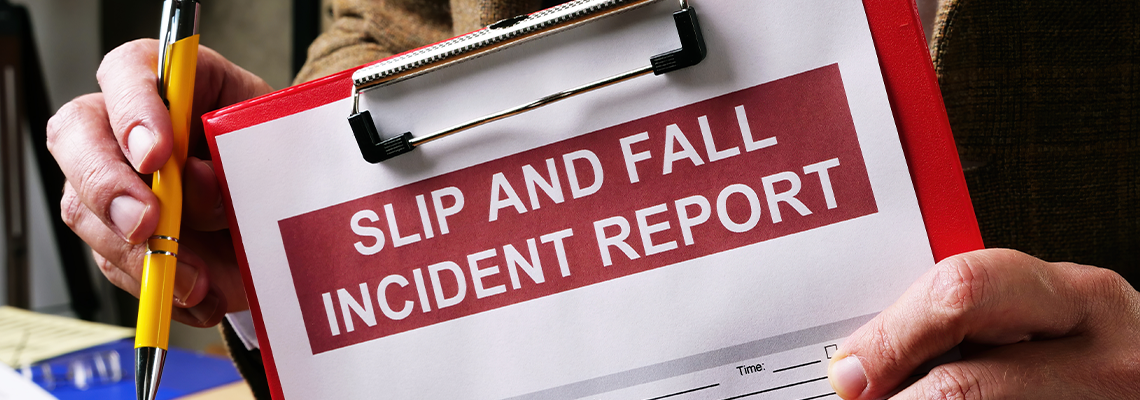
Critical Factors in Determining Liability for Slip-and-Fall Accidents
Slip-and-fall accidents happen in an instant, but the impact can last for months or even years. What seems like a simple fall can lead to serious injuries, including broken bones, spinal damage, or traumatic brain injuries. Victims are often left dealing with medical bills, lost income, and a long, painful recovery. Whether it happened in a store, on a sidewalk, or in a residential building, your fall may not have been your fault, and you have the right to hold negligent property owners accountable.
At The Eskesen Law Firm, I’ve seen firsthand how devastating these liability incidents can be. I work with clients throughout New York City, including Kings County (Brooklyn), Queens County, New York County (Manhattan), Bronx County, and Richmond County (Staten Island), who’ve been injured due to unsafe conditions.
If you or someone you love was hurt in a slip-and-fall accident, don’t wait to get answers. Reach out to my firm to learn how I can help you protect your legal rights and fight for compensation.
What Makes a Property Owner Liable?
One of the biggest questions after a slip-and-fall is whether the property owner can be held legally responsible. In New York, property owners have a duty to keep their premises reasonably safe. If they fail to fix a dangerous condition or fail to warn about it, and someone gets hurt as a result, they can be held liable.
But liability isn’t automatic. It comes down to proving that the owner knew or should have known of the hazard and failed to take action.
Some elements of property owner liability include:
A dangerous condition existed on the property (e.g., wet floors, loose tiles, poor lighting).
The owner or manager knew about the hazard or should have known through regular inspections.
No proper warning signs were posted, nor was action taken to fix the danger.
The hazard directly caused your injury, meaning you fell because of it, not for unrelated reasons.
As your attorney, I’ll investigate the incident thoroughly to determine if these conditions were met. Holding the property owner accountable for liability is often the first step toward a successful personal injury claim.
Common Causes of Slip-and-Fall Accidents
Slip-and-fall cases can happen almost anywhere — from icy sidewalks to grocery store aisles. Knowing what caused your fall is essential for building a strong case. I help clients identify the specific hazard that caused their injury, using photos, witness accounts, and analysis when needed. Typical hazards that lead to slip-and-fall accidents include:
Wet or slippery floors: From spills, mopping, rain, or tracked-in snow.
Uneven surfaces: Loose tiles, cracked sidewalks, torn carpets, or broken stair steps.
Poor lighting: Dimly lit hallways, stairwells, or entryways that make hazards harder to see.
Debris or obstacles: Boxes, cords, or clutter left in walkways.
Ice and snow: Outdoor areas not salted or shoveled promptly.
Each of these conditions represents a potential safety failure. If the property owner didn’t correct the problem in a reasonable amount of time, they may be liable for your injury.
How Notice Affects Your Case
One of the most important factors in a slip-and-fall case is notice —whether the property owner was aware of the dangerous condition. Without proof of notice, it can be difficult to win your case.
Types of notice that support liability:
Actual notice: The owner was directly aware of the hazard (e.g., someone reported it, or they saw it themselves).
Constructive notice: The hazard was present long enough that the owner should have known about it if they had been doing regular inspections.
Created the hazard: If the owner or employee caused the dangerous condition, that alone can establish liability.
Proving notice often involves digging into surveillance footage, maintenance records, or incident reports. That’s why it’s so important to contact an attorney early — I’ll work to preserve critical evidence before it disappears.
Who Can Be Held Responsible?
In a slip-and-fall case, more than one party may be responsible. It all depends on where the accident happened and who had control over the area. Sometimes, even the property owner isn’t the only person legally responsible.
Parties who may be liable for your slip-and-fall injuries:
Commercial property owners: For stores, restaurants, malls, and other public businesses.
Landlords or property managers: Especially in apartment buildings or office complexes.
Government entities: For accidents on public sidewalks, city buildings, or parks.
Private homeowners: If you were injured while visiting someone’s home.
Maintenance or cleaning companies: If their employees caused or ignored a hazard.
I review each case individually to determine who had the duty to keep the area safe.
Do This Immediately After a Slip-and-Fall
The steps you take after a fall can make or break your injury claim. Whether you’re in pain, embarrassed, or confused, try to stay focused — and make sure to protect yourself both physically and legally.
Steps to take immediately after a slip-and-fall include:
Get medical attention: Call 911 if needed, or visit an urgent care center or an ER.
Report the accident: Notify the store manager, landlord, or property owner. Ask them to write an incident report.
Take photos: Photograph the scene, your injuries, and the hazardous condition.
Get witness info: Ask anyone nearby for their contact details in case their statement is needed later.
Don’t sign anything: Avoid giving written or recorded statements without legal advice.
I’ve worked with many clients who didn’t think their fall was “serious enough” to document—only to face pushback when trying to file a claim later. Taking these early steps gives you the best possible foundation to seek compensation.
Medical Treatment and Recovery Records
Your medical treatment isn't just about healing; it’s also a key part of your injury case. The more detailed and consistent your treatment is, the more credibility your claim will have.
Important medical documentation to keep track of:
Doctor visits and diagnoses
Emergency room records
X-rays, MRIs, and imaging reports
Treatment plans and prescriptions
Physical therapy sessions
Medical bills and out-of-pocket costs
In addition to medical documents, I also encourage clients to keep a personal injury journal. Record your pain levels, mobility challenges, and how the injury affects your day-to-day life. All of this helps show the full impact of the accident.
Compensation You May Be Entitled To
Many clients are surprised to learn just how much they can recover after a slip-and-fall injury. Your compensation should cover everything you’ve lost — not just your medical bills, but your quality of life, too.
Types of compensation available in slip-and-fall cases:
Medical expenses: ER visits, hospital stays, rehab, medication, and follow-up care.
Lost wages: For time missed from work or reduced hours due to injury.
Pain and suffering: For physical pain, emotional distress, and reduced quality of life.
Loss of future earning capacity: If your injury prevents you from returning to your previous job.
Home modifications or assistive devices: If you need mobility aids or other accommodations.
When I evaluate a case, I look at both current and future damages to make sure no dollar is left on the table. Insurance companies often try to settle quickly and cheaply, but you don’t have to accept their first offer.
Mistakes That Can Hurt Your Case
Even with a strong case, minor missteps can give the insurance company a reason to reduce or deny your claim. Knowing what not to do is just as important as knowing what to do.
Common mistakes that hurt slip-and-fall cases:
Not reporting the fall: If there’s no incident report, the property owner may deny it ever happened.
Delaying medical treatment: Gaps in care make it harder to prove you were seriously hurt.
Talking to insurance adjusters: They may twist your words or get you to downplay your injury.
Posting on social media: Photos or comments can be used against you in court.
Not contacting a lawyer early: Waiting too long can cause you to miss deadlines or lose evidence.
One of the most significant benefits of hiring an experienced personal injury lawyer early is that I can help you avoid these common pitfalls from the outset.
Get Started With a Personal Injury Attorney
Slip-and-fall accidents are often dismissed as “minor” or “clumsy,” but the truth is they can cause serious harm — and the consequences can follow you for years. You shouldn’t be stuck paying the price for someone else’s failure to keep their property safe.
At The Eskesen Law Firm, I represent people in personal injury claims across Kings County (Brooklyn), Queens County, New York County (Manhattan), Bronx County, and Richmond County (Staten Island).
Whether your fall happened in a store, a parking lot, or your apartment building, I’ll investigate what went wrong, identify the liable parties, and demand the compensation you deserve. If you’ve been hurt in a slip-and-fall accident, call me today for a free consultation.
